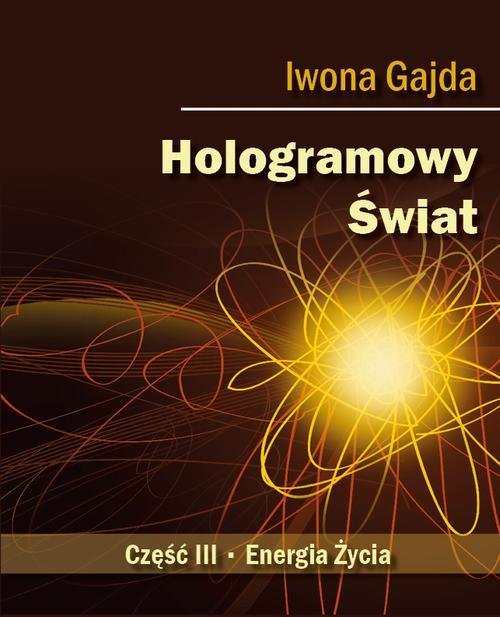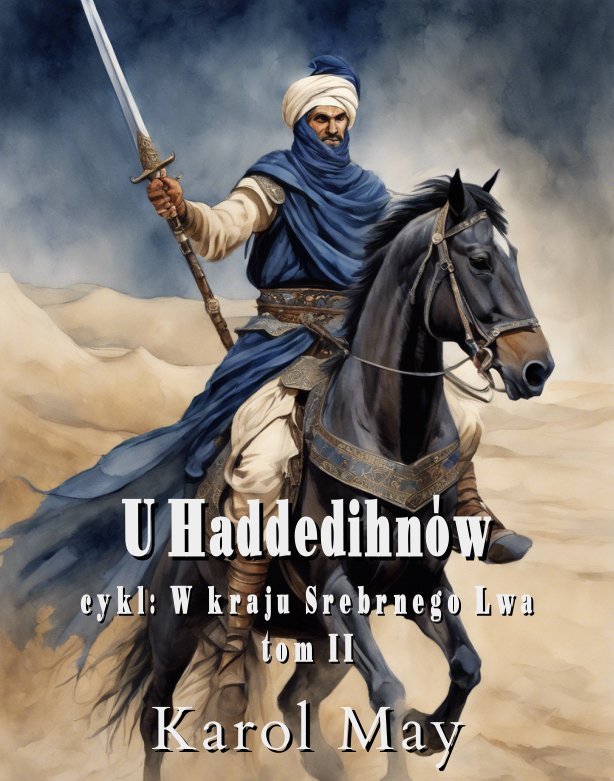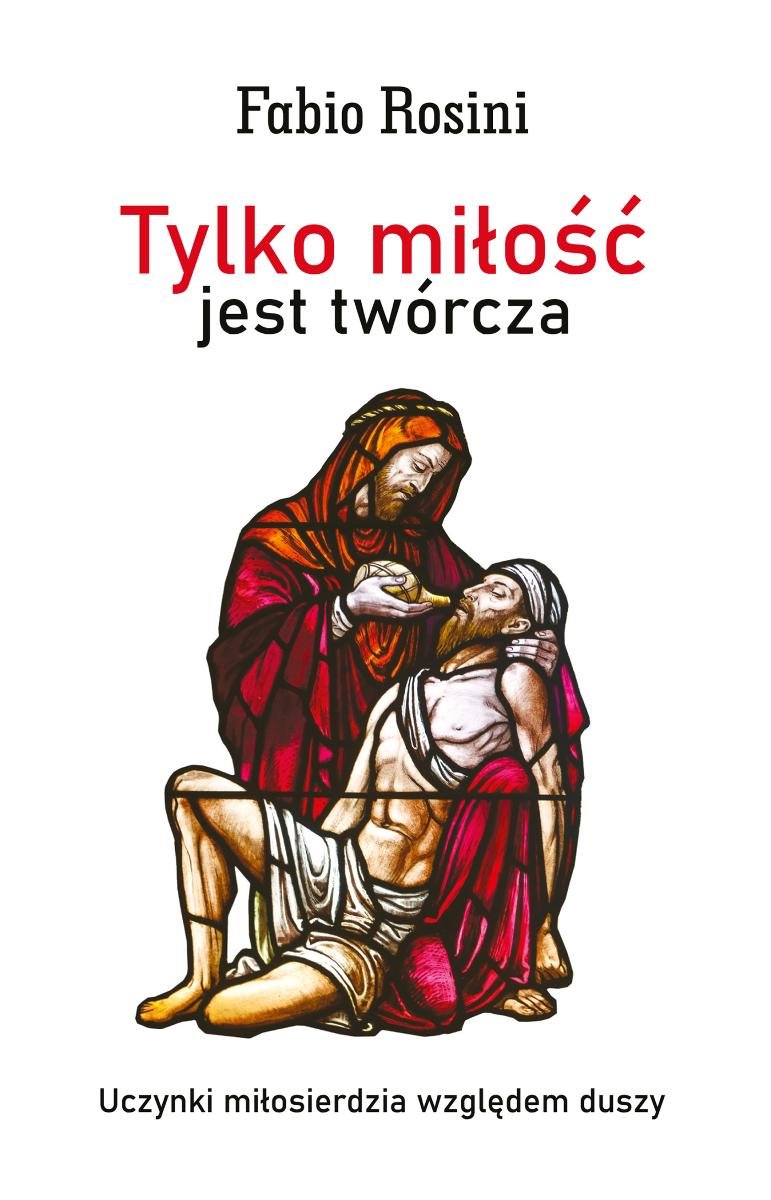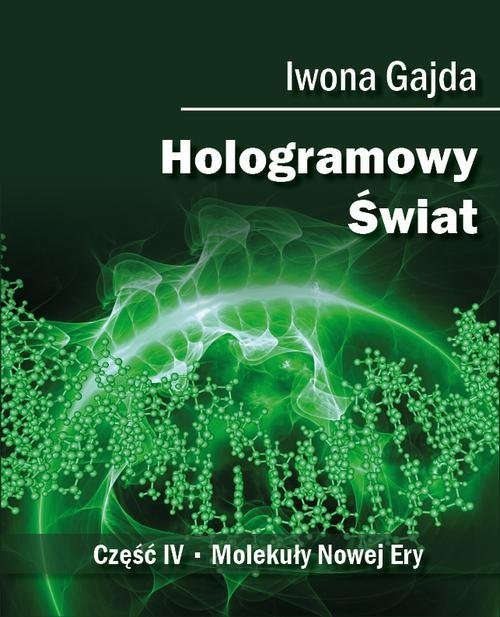Czytaj więcej:

Zobacz podgląd On Screen. Pre-Intermediate B1. Workbook & Grammar Book. Matura 2015 pdf poniżej lub w przypadku gdy jesteś jej autorem, wgraj własną skróconą wersję książki w celach promocyjnych, aby zachęcić do zakupu online w sklepie empik.com. On Screen. Pre-Intermediate B1. Workbook & Grammar Book. Matura 2015 Ebook
podgląd online w formacie PDF tylko na PDF-X.PL. Niektóre ebooki nie posiadają jeszcze opcji podglądu, a inne są ściśle chronione prawem autorskim
i rozpowszechnianie ich jakiejkolwiek treści jest zakazane, więc w takich wypadkach zamiast przeczytania wstępu możesz jedynie zobaczyć opis książki, szczegóły,
sprawdzić zdjęcie okładki oraz recenzje.


swojego dzieła, aby zachęcić czytelników do zakupu!

Średnia Ocena:
On Screen. Pre-Intermediate B1. Workbook & Grammar Book. Matura 2015
Kurs przeznaczony do nauki języka angielskiego na poziomie B1, przygotowujący do Matury 2015.
| Szczegóły | |
|---|---|
| Tytuł | On Screen. Pre-Intermediate B1. Workbook & Grammar Book. Matura 2015 |
| Autor: | Evans Virginia, Dooley Jenny |
| Rozszerzenie: | brak |
| Język wydania: | polski |
| Ilość stron: | |
| Wydawnictwo: | Egis Sp. z o.o. |
| Rok wydania: | |
| Tytuł | Data Dodania | Rozmiar |
|---|


On Screen. Pre-Intermediate B1. Workbook & Grammar Book. Matura 2015 PDF Ebook podgląd:
Jesteś autorem/wydawcą tej książki i zauważyłeś że ktoś wgrał jej wstęp bez Twojej zgody? Nie życzysz sobie, aby pdf był dostępny w naszym serwisie? Napisz na adres [email protected] a my odpowiemy na skargę i usuniemy zgłoszony dokument w ciągu 24 godzin.
Pobierz PDF
Wgraj PDF
To Twoja książka? Dodaj kilka pierwszych stronswojego dzieła, aby zachęcić czytelników do zakupu!
On Screen. Pre-Intermediate B1. Workbook & Grammar Book. Matura 2015 PDF transkrypt - 20 pierwszych stron:
Strona 1
2a
Plan & Useful Language
Introduction
Greeting: Good
1
Strona 2
Published by Express Publishing
Liberty House, Greenham Business Park, Newbury,
Berkshire RG19 6HW, United Kingdom
Tel.: (0044) 1635 817 363
Fax: (0044) 1635 817 463
email: [email protected]
www.expresspublishing.co.uk
© Jenny Dooley – Virginia Evans, 2017
Design and Illustration © Express Publishing, 2017
First published 2017
Third impression 2018
Made in EU
All rights reserved. No part of this publication may be reproduced, stored in a retrieval system, or
transmitted in any form, or by any means, electronic, photocopying, or otherwise, without the prior
written permission of the publishers.
This book is not meant to be changed in any way.
Acknowledgements
Author’s Acknowledgements
We would like to thank all the staff at Express Publishing who have contributed their skills to
producing this book. Thanks for their support and patience are due in particular to: Megan Lawton
(Editor in Chief); Mary Swan and Sean Todd (senior editors); Michael Sadler and Steve Miller (editorial
assistants); Richard White (senior production controller); the Express design team; Warehouse
(recording producers); and Kevin Harris, Kimberly Baker, Steven Gibbs and Christine Little. We would
also like to thank those institutions and teachers who piloted the manuscript, and whose comments
and feedback were invaluable in the production of the book.
Photograph Acknowledgements
Presentation 7: Lend a Helping Hand: Make-A-Wish logo © www.iml.gr on p. 20
Every effort has been made to trace all the copyright holders. If any have been inadvertently
overlooked, the publishers will be pleased to make the necessary arrangements at the first
opportunity.
2
Strona 3
Contents
Introduction ................................................................................................................................ p. 4
Presentation Skills 1 – Nature’s Wonders .............................................................................. p. 8
Presentation Skills 2 – Famous Characters in Literature ...................................................... p. 10
Presentation Skills 3 – Transportation Over the Years .......................................................... p. 12
Presentation Skills 4 – A Day at the Museum ........................................................................ p. 14
Presentation Skills 5 – Helping Our Planet ............................................................................ p. 16
Presentation Skills 6 – Ancient Routes .................................................................................. p. 18
Presentation Skills 7 – Lend a Helping Hand ......................................................................... p. 20
Presentation Skills 8 – “Enjoy the Show!” .............................................................................. p. 22
Ceremonial Speeches .............................................................................................................. p. 24
Toasts ......................................................................................................................................... p. 27
Extra Material ........................................................................................................................... p. 28
NOTE: In the model presentations, the way of getting content feedback – when used – appears in a
coloured box. This is because getting content feedback at the end of the presentation is optional.
3
Strona 4
Introduction
Informative
Present Persuasive
Types
Ceremonial
Body language
Dos & Don’ts PUBLIC SPEAKING
SKILLS How to structure
Necessary skills for a presentation
personal, academic and
Prepare professional purposes
Main body Introduction
Rehearse Read
Research
Thank the audience Greet the audience (optional)
Introduce yourself (optional)
Invite & answer questions
Conclusion Introduce the topic
Get feedback (optional)
What is public speaking?
Public speaking is the act of addressing a group of people in order to describe a place or object, to narrate important events, to
persuade, or to communicate ideas. The most common form of public speaking is a presentation.
Types of presentations 2 use a quotation e.g.The British Animal Rights Activist
There are different types of presentations: Dr Jane Goodall once said, “What you do makes a
• Informative e.g. school presentations, science & difference and you have to decide what kind of difference
technology presentations, business seminars. you want to make.” Today we will discuss the difference
• Persuasive e.g. in sales, debates, to a group of peers, you can make.
political speeches. 3 ask a rhetorical question e.g. Let me start by asking you
• Ceremonial e.g. graduation, wedding toast. this: whose job is it to save the planet? the government’s?
Public speaking skills are also needed in interviews (job & your parents’? yours?
journalism), project reports at a meeting, etc. 4 make a statement e.g. Last week we talked about rivers.
Today, we'll discuss another landscape feature on Earth.
Purposes of presentations One that is extremely beautiful and unique to some places
We give presentations to: in the world. Fjords!
A describe a product, an invention, a place, people 5 narrate a personal or general story e.g. A ship is sailing
(e.g. myself, a famous person). to Africa. Along the way, the ship encounters a storm and
B narrate important events (e.g. historical events, natural crashes on the rocks near an island. Everyone jumps
disasters and their causes/effects, etc). overboard in the hope of saving themselves. But sadly,
C persuade by presenting arguments for/against an issue, only one survives and makes it to shore.
expressing our opinion on an issue, stating a problem & 6 set the scene and stimulate emotions e.g. Imagine this:
suggesting solutions, political discussions, campaigns, a little boy has been diagnosed with terminal leukemia. All
etc. he wants in life is to be a policeman. So, his mum, friends
D communicate in panels, debates, conferences, etc. and a group of police officers help to grant his wish. This
gave the child so much happiness, hope and strength that
How to structure a presentation
those involved wanted other sick children to feel the same
A presentation consists of a(n): way too. That was the beginning of the Make-A-Wish
• Introduction, in which we greet the audience and Foundation.
introduce ourselves (if the audience doesn’t know who we 7 use visuals (photos, charts, films, pictures, films, etc)
are) and introduce the topic. e.g. Let me show you this short video clip about the
• Main body, in which we present the main points. marvellous place we will visit.
• Conclusion, in which we summarise the main points, 8 use music (a song, soundtrack, etc) e.g. Listen to this
invite and answer questions from the audience and piece of music. What does it bring to mind?
thank the audience for listening to us. We can sometimes 9 use humour (a joke, a riddle, etc) e.g. Some people say
get content feedback from the audience. that living on Earth is really expensive. But at least, we all
Opening/Closing techniques get a free trip around the Sun every year!
10 use a rhyme or a short poem e.g. “Unless someone like
To start a presentation we can:
you cares an awful lot, nothing is going to get better. It's
1 address the audience by asking a question e.g. Does not.”.
anybody know what a fjord is?
4
Strona 5
Introduction
To end a presentation we can: the participants stand up and if the answer is NO/FALSE,
1 address the audience by asking a question e.g. So, let they remain seated.
me finish by asking you this: are you willing to help? 6 Make a list: Summarise the most important points of your
2 use a quotation e.g. Just like the environmentalist Robert presentation. Write the initial letter of each word/phrase
Swan once said, “The greatest danger to our planet is the on a slide/a flipchart/the whiteboard. Ask the audience to
belief that someone else will save it.” find the correct words/phrases. e.g. What can we do to
3 ask a rhetorical question e.g. From canoes and horses protect the environment? Recycle/Reuse/ Recycle
to steam trains, cars, aeroplanes and space travel, Save water/Plant trees/Ride a bike to school
Reuse
transportation has come a long way. What will the future etc.
S...
hold for transportation? Who knows? We will just have to Getting Speaker Feedback P...
wait and see!
Getting feedback from your audience allows you R...
4 make a statement e.g. I believe it's simply amazing that
to develop your public speaking skills and
something we use on a daily basis, was one of the reasons
become an effective speaker. You will know exactly what
why civilizations changed forever!
your strong points are and what areas you may need to
5 narrate a personal or general story e.g. When I was a
improve.
student myself – a long, long time ago – my History teacher
You can use the Assessment Form below:
used to say that museums bring history to life. That’s why
(1 = needs improvement, 2 = good, 3 = very good)
I want you all to visit this fascinating museum so as to see
history with your own eyes and get a better understanding
of our past, but also get a glimpse of the future.
6 stimulate emotions e.g. Helping the environment will not
1 2 3
only give you a feeling of pride, it will also inspire others Content
to join in the efforts to make the world a better place. Was the presentation interesting?
7 use humour (a joke, a riddle, etc) e.g. I love reading Did I learn something new?
mysteries, but every book is a mystery if you never finish
Was the speaker well-prepared?
reading it!
8 ask a ‘what if’ question e.g. What if people turned a blind Organisation
eye? Well, those kids with serious illnesses and life- Was the presentation clearly organised
threatening conditions would not be able to experience and easy to follow (introduction – main
the same hope, strength and joy that all kids deserve. body – conclusion)?
9 use a rhyme or a short poem e.g. And inspired by the Did the speaker use a catchy beginning
famous song, I urge you all to “Heal The World/Make It A (hook statement)?
Better Place/For You And For Me/And The Entire Human Did the speaker summarise the
Race”. main points at the end?
Was the presentation appropriately
Ways to get content feedback from the audience timed (not too short or too long)?
(optional)
Visual material
After you have presented your points, you can check if your
audience has understood your topic. There are several ways Did the speaker use appropriate visual
to get feedback and check understanding. These are: material?
Were the slides well-organised?
1 Pop quiz style questions in teams: Split the audience
into two teams (A and B) and ask questions about the Were the visuals/slides/fonts easy
presentation topic. e.g. It’s time for a quiz in teams! The to see?
team that gets the most answers correct wins! Team A: Delivery of presentation
When was ... built? Correct! Team B: How old is ...? Was the speaker confident?
2 Open discussion: Invite the audience to share their own Did the speaker use a clear voice?
similar experiences. e.g. Would anyone like to share
Did the speaker maintain eye contact
his/her own similar experience?
with the audience?
3 Polling questions: Ask the audience a question and they
answer by raising their hands or standing up. e.g. How Did the speaker use appropriate facial
many of you recycle on a regular basis? Raise your hands. expressions and gestures?
4 Focus groups: Divide the audience into groups of What did you like most about this presentation?
3-4 and give questions for them to discuss and report
back. e.g. What do you think was the most interesting Which aspect(s) of the presentation need(s) to be
idea? improved?
5 Game: Prepare a Y/N or T/F quiz with questions/
statements based on the presentation. e.g. Mars is the
second planet from the Sun. If the answer is YES/TRUE,
5
Strona 6
Introduction
Body Language
Body language is very important when you give a presentation. It is part of communication and helps you maintain
your audience’s attention and interest.
Dos ✓ Don’ts ✗
Remember to be polite and smile. Don’t read directly from your notes.
Stand up straight and maintain eye contact with your Don’t turn your back to the audience.
audience.
Use appropriate facial expressions and gestures to Don’t fold your arms.
make your presentation clear.
6
Strona 7
Introduction
Using Presentation Software
To engage your audience’s attention, you can use presentation software, like PowerPoint or Keynote. This way you
can support and highlight your message, and make your whole presentation more interesting.
1 Use a simple layout 4 Use dark fonts on light backgrounds or
This will help the audience to follow your presentation light fonts on dark backgrounds
easily. This will make your slides easier to read.
2 Use a title 5 Use clear and easy-to-read fonts
This will let your audience know what you are speaking The audience will lose interest if they cannot read your
about. slides easily.
6 Use notes rather than long sentences
3 Use visuals
This will ensure that your audience can understand your
Visuals capture the attention of the audience and make points and focus on listening to the presentation rather
your presentation more interesting. than reading long sentences on the screen.
7
Strona 8
1
Model analysis b) Copy the spidergram into your notebook
and complete it with information from the
Nature’s Wonders model presentation.
Imagine you are a Geography teacher. Give a
presentation about fjords to your class. what they
are
where to find
them
1 a) Read the presentation. Can you identify
Fjords
the purpose of the presentation? (See Purposes
of presentations on p. 4.)
how they
Last week we talked about rivers. Today, we’ll discuss another are formed
landscape feature on Earth. One that is extremely beautiful and
unique to some places in the world. Fjords!
Does anybody know what a fjord is? ... No? Well, to put it
2 Read the underlined parts in the
presentation. Which opening/closing
simply, it’s a narrow strip of water that goes from the sea into techniques does the speaker use? (See
the land, also known as an inlet. An inlet is deep and usually
Opening/Closing techniques on pp. 4-5.)
has steep cliffs or mountains along each side, just like in this
photo. Because a fjord has deep water, it’s home to many
magnificent cold-water coral reefs.
What’s amazing about fjords is that they were made by glaciers, 3 Which technique does the speaker use to
get content feedback from the audience?
which as many of you know, are gigantic masses of ice that form
Can you suggest an alternative feedback
during an ice age. What happens is, the glaciers move slowly and
technique? (See Ways to get Content Feedback
make U-shaped valleys in the land as they travel towards the sea
from the Audience on p. 5.)
and melt. The sea water then fills these valleys, and a fjord is created.
Now, let’s talk about where fjords are located. One place is
Your turn
Norway, which has approximately 1,200 of them. In fact, the
word ‘fjord’ is a Norwegian word, which means a place on the
water where you can cross over to the other side. Interesting,
Nature’s Wonders
right? There are also fjords in other places near the poles Imagine you are a Geography teacher. Give
a presentation about lakes to your class.
including New Zealand, Greenland, Canada, Alaska and Chile.
(Student’s Book, Module 1, p. 16)
So to recap, fjords are narrow inlets made by glaciers that can
be found in countries, such as Norway. For us Geography
teachers, however, fjords are one of the unique natural wonders Organising ideas
of our world that make it a remarkable place to explore and
teach. I’m sure you all agree with me on this one, right?
4 Research online about lakes. Collect
information about: what they are, how they
Now let’s play a game. Listen to my statements. If you think the are formed, where to find them.
statement is true, stand up. If you think it is false, stay seated.
Let’s begin! A fjord is a narrow strip of water that goes from the Researching
sea into the land. ... That’s correct! An inlet is always surrounded
by steep cliffs and mountains. ... No, that’s false. It is usually Tip!
surrounded by steep cliffs and mountains, but not always. Fjords When researching for your presentation, you can
are common in Norway. ... Yes, they are. Well done! use a search engine like Google or Bing to find
Does anyone have any questions? ... information in online academic resources (e.g.
OK, let’s now move on to lakes. encyclopaedias, dictionaries, scientific or scholarly
journals, official university sites, etc.).
Alternatively you can use printed material from your
school or local library (textbooks, reference books,
news articles etc.) to find information. (See p. 28
for ideas).
8
Strona 9
1
Opening/Closing Techniques
Plan & Useful Language
Tip! Introduction
To start and end your presentation, you can use one of the techniques • Select an appropriate opening technique
you have learnt about in the Introduction (pp. 4-5). Note that it is also to introduce the topic (e.g. set the scene
possible to combine two or more techniques at the same time. e.g. & stimulate emotions: Imagine this: You
addressing the audience and making a statement: Did you know there wake up, walk outside your holiday cabin
are approximately 117 million lakes on our planet? ... It's true! to the edge of the lake (general comment
Researchers counted all the lakes using satellites and advanced about the lake). This, class, is a short
technology and came up with this extraordinary number. Let's find out description of ... . In today's lesson, we
more about them. will be learning more about them.)
Main body
What they are: We all have an idea of
what a lake looks like, but do you really
5 a) Read the extracts (A & B) from the introductions of know what it is? To begin with, a lake is ... .
presentations about lakes. Each extract uses two or more How they are formed: What's amazing
opening techniques. Can you identify them? about lakes is that they are formed as a
result of many different things. Let’s talk
about a few of them. We’ll start with ... .
A Look at this picture closely. What can you see? A beach by the
Where to find them: Now, since lakes
sea? Well, it isn't. Look again! ... This is a picture of a lake in ... .
contain about 90% of all the surface water
It's beautiful, right? Today we will be exploring these amazing
on Earth, most countries have got one. Let
wonders of nature.
me tell you about some of our world's most
B Lily pads ... green frogs ...ripples on still water... are some of the famous lakes. At/In ... .
words people think of when they hear the word 'lake', aren't
they? Well, these are definitely some common features of lakes Conclusion
around the world. But as you will learn today, there is a lot more • Summarise the main points of your
to these stunning bodies of water. presentation.
• Select an appropriate closing technique
to conclude your presentation (e.g. make
a statement: However, as we all see beauty
b) Read the extracts (A & B) from the conclusions of differently, it's best to experience ... .)
presentations about lakes. Each extract uses two or more • (optional) Select an appropriate feedback
closing techniques. Can you identify them? technique (e.g. pop quiz style questions:
Now, it's time for a quiz in teams! The
team with the most correct answers wins.
A For most people though, lakes are much more than areas of
water. Just as the essayist Henry David Thoreau wrote, “A lake
Team A: Name one lake ... . Team B: Name
is the landscape’s most beautiful and expressive feature. It is one way lakes are ... .)
Earth’s eye; ... .” Don't you all agree, too? • Invite questions from the audience
[e.g. Any questions? ...)
B So you see, people have always been fascinated by lakes
because of their unique beauty and serene surroundings. And it
is perhaps for these reasons that there are so many myths and
legends, stories and fairytales associated with them. Checklist
When you have finished writing your
presentation, make sure you have:
• introduced the topic
Preparing & Presenting
• included all the key points of your
6 Follow the plan. Use the information you have collected in research
Ex. 4 to prepare your presentation. You can use phrases
• used appropriate opening/closing/
and the opening/closing techniques from the Plan & Useful
feedback techniques
Language box and/or Exs 5 & 6. You can get content
Rehearse and give your presentation.
feedback.
9
Strona 10
2
Model analysis b) Read the presentation again. In which
paragraph does the speaker: first mention the
Famous Characters in Literature character's name? talk about the author? mention
Imagine you are a member of a book club. Give a the title of the novel and its publication date? talk
presentation to other members about a famous character about the plot? describe the character?
in literature from your country.
2 a) Rewrite the introduction of the model
presentation using a different opening
1 a) Read the presentation about Robinson
technique (setting the scene).
Crusoe. Can you identify the purpose of the
presentation? (See Types of presentations on p. 4.) b) Rewrite the conclusion of the model
presentation using a different closing
1 A ship is sailing to Africa. Along the way, the ship technique (asking a rhetorical question).
encounters a storm and crashes on the rocks near an island.
Everyone jumps overboard in the hope of saving themselves. Your turn
But sadly, only one survives and makes it to shore. Any idea
who this person is? ... Yes, this survivor is Robinson Crusoe Famous Characters in Literature
– one of my favourite characters in literature.
Imagine you are a member of a book club.
2 Robin Crusoe was brought to life by the talented British Give a presentation to other members about a famous
writer Daniel Defoe. Born in 1660 in London, Defoe spent his character in literature from your country.
early years working unsuccessfully as a merchant. As a (Student’s Book, Module 2, p. 30)
result, he turned to one of his passions, politics, and wrote
political pamphlets. Then, at the age of 59, he took his writing
down a new path and published The Life and Adventures of
Robinson Crusoe in 1719, creating the famed character
3 Research online about a famous character in
literature from your country. Collect
Robinson Crusoe. information about: the character's name,
3 So, what is this novel about? Simply, it looks at one details about the author, the title of novel, the
man's struggle to survive. The story begins with a young publication date, the plot and character details.
Crusoe running away to sea. He ends up getting shipwrecked
on a desert island for thirty years! There, he builds shelter, Using a hook statement
grows his own food, survives an earthquake and fights
pirates. What's more, we are also introduced to Friday, a Tip!
native Crusoe meets and saves from cannibals. Friday ends
up becoming a loyal friend to Crusoe. At the end of the novel, Many of the opening techniques you’ve seen so far
a ship rescues them and they both sail to England. include a hook statement, i.e. a catchy, interesting
phrase, that will attract (hook) the audience’s
4 During Crusoe’s adventures, readers are shown how
attention, get them involved in your presentation and
his rebellious and adventurous side gets him into trouble. But
make them feel part of it. e.g. Who is your favourite
at the same time, they also learn that his intelligence, hard
fictional character? ...Why?.../Can you imagine
work, kindness, courage and determination are the reasons
Camelot without King Arthur or the world of Sherlock
he is able to survive on the island.
Holmes without Dr Watson?
I think Robinson Crusoe's character, while fictional, is a great
example of how one can overcome difficult situations no
matter what they are. That is probably the reason why he has
remained popular through the years. In fact, the English poet 4 Read the extracts (A and B) from the
and literary critic Samuel Taylor Coleridge perfectly sums up introductions of presentations. Underline the
Crusoe's appeal when he described him as hook statement in each extract.
“the universal representative, the person for
whom every reader could A When was the last time a fictional character
substitute himself.” fascinated you so much that you couldn't put down
Would anyone like to share his or the book? Well, if you haven't experienced this, you
her thoughts on Robinson definitely need to read ... .
Crusoe?... B Do you want to escape to a new world without ever
Do you have any leaving your chair? Do you want to go on an
questions for me? ... adventure of a lifetime with a person you admire?
Thanks for listening! Well, if you do, let me introduce you to ...
10
Strona 11
2
Using Visuals/Video
Plan & Useful Language
Tip! Introduction
You can include visuals (images or a short video clip) in your • Select an appropriate opening technique
presentation to make it more attractive and memorable. (See p. 29 to introduce the topic (e.g. use visuals: I'm
for ideas) sure you all recognise the cover of this
book. It features ..., and today I’d like to
tell you about ... .)
Main body
Peer Assessment Character's name/author details: But before
Read the tip below about peer assessment. I talk about [character’s name], let's get to
know the author a little better. [Author’s
Tip! name] was born in ... .
Title/Publication Date: [Author’s name]
Before you deliver your presentation in front of an audience, it is wrote [novel title] in ... .
a good idea to rehearse it in front of your friends/fellow students Plot: So, what happens in this book? Well,
and ask them to assess it. This way, you can identify your it's about/based on etc. ... . It starts by/
presentation’s strengths, as well as the areas you might need to with/looks at ... .Finally, at the end ... .
improve or practise more.
About the character: As we progress
through the story, we come to know
[character’s name] as a ... . We are also
shown how/why/what ... . It's for these
5 Make copies of the assessment form below, give a copy reasons, people all around the world have
to your fellow students and ask them to assess your come to love/admire [character’s name].
presentation. Conclusion
• Summarise the main points of your
ASSESSMENT FORM presentation.
Poor Good Excellent • Select an appropriate closing technique to
Is the presentation informative? conclude your presentation (e.g. addressing
1 1 2 3 the audience: I guess it is because of
(Did I learn something new?)
Is it well-organised and easy to follow characters like ... we have all come to enjoy
2 1 2 3
(introduction, main body, conclusion)? ..., right?
3
Did the speaker use appropriate
1 2 3 • (optional) Select an appropriate feedback
opening/closing techniques? technique (e.g. polling questions: So how
Did the speaker maintain the audience’s many of you have read ...? How many of
4 attention (eye contact, facial expressions, 1 2 3 you would like to read/learn about ...?)
gestures, etc)?
• Invite questions from the audience (e.g.
Did the speaker use presentation software Are there any questions for me? ...)
5 with well-organised slides, appropriate 1 2 3
• End your presentation (e.g. Thank you all
visuals and fonts, etc?
for your attention.)
Preparing & Presenting
Checklist
6 Follow the plan. Use the information you have collected in
When you have finished writing your
Ex. 3 to prepare your presentation. You can use phrases and
the opening/closing techniques from the Plan & Useful presentation, make sure you have:
Language box and/or Ex. 4. You can get content feedback • introduced the topic
and use visuals to make your presentation more interesting. • included all the key points of your
research
• used appropriate opening (hook
Getting Speaker Feedback
statement)/closing/feedback
7 Before you deliver your presentation, give a copy of the techniques
Assessment Form (p. 5) to each member of the audience. Ask • used appropriate visuals/video
them to evaluate your presentation and give you feedback.
Rehearse and give your presentation.
11
Strona 12
3
Model analysis b) Read the presentation again. Match the
paragraphs (1-6) to the headings (a-f).
Transportation Over the Years
a steam engine & train
Imagine you are a History teacher. Give a talk about
b conclusion
the history of transportation.
c car & aeroplane
d early beginnings
1 a) Read the presentation about the history e space
of transportation. Can you identify the type f introduction
and purpose of the presentation?
1 Let me ask you a question: How did you all get to school Linking Ideas
today? Bus, car, the underground... It's
no secret that when it comes to Tip!
transportation, we have so many options
to choose from thanks to the amazing When giving a presentation, you should use
developments in this field. In our lesson appropriate linking devices to connect your ideas
today, we shall be exploring these and move smoothly from one point to the next.
developments in more detail as we look These will help you to:
at the history of transportation. • list points: firstly, first of all, let's start with/go to,
2 Let's start over 10,000 years ago. During that time, secondly, thirdly, (the) next, the first, the second,
people travelled by sea on wooden canoes and on land on foot. another thing is, finally, as well as, etc.
Can you imagine how long it took to go from one place to the • add more points: what’s more, apart from, in
other? Yes, a really long time! Later, people started to use horses addition (to), besides, not only ... but also ..., which
to get to their destinations and that led to the use of carts and (later) lead/resulted in..., after ... , following ..., both,
wagons, like the one in the photo here. etc.
3 Then in 1769, something amazing happened. The Scottish • express cause: because (of), since, due to (the
inventor James Watt improved a previous version of the steam fact that), seeing that, as, for this reason, what
engine and that was the start of many great things for makes ... is, etc.
transportation. Because of this invention, the French inventor • express effect: so, this means that, as a result,
Claude de Jouffroy d’ Abbans was able to build the first ever steam therefore, consequently, and so, etc.
boat in 1776 and then in 1804, the Englishman Richard Trevithick • express purpose: so that, in order to, in case, etc.
built the first steam-powered train. • emphasise a point: clearly, in fact, obviously, (but)
4 Does anyone know what means of transport came after the of course, well, (un)fortunately, actually, needless to
steam boat and the steam train? That's right, it was the car, which say, etc.
was invented by Karl Benz in 1885. But of course, man didn’t stop • clarify a point: in other words, that is to say, to
there. In 1903, Orville and Wilbur Wright built the first aeroplane. put it another way, etc.
Both of these inventions changed the 20th century. In fact, by the • express similarity: likewise, also, similarly, in the
1970s, owning a car was very common and travelling abroad same way, at the same time, similar to, (just) like/as,
became easier. etc.
5 Following the car and aeroplane, • make contrasting points: on the other hand,
transport expanded to outer space. In however, still, yet, but (of course), nevertheless,
1961, Yuri Gagarin became the first man although, even though/so, despite/In spite of (the
in space which was something that I don't fact), besides, instead, etc.
think many people believed would ever • summarise points: in short, in a nutshell, to
happen. But then in 1969, people watched enthusiastically as Neil recap, to sum up, etc.
Armstrong walked on the moon. Can you see Armstrong in this
photo? Right there making one giant leap for mankind!
6 So, to recap what we’ve discussed today, from canoes
and horses to steam trains, cars, aeroplanes and space travel,
transportation has come a long way. What will the future hold for
2 a) Underline the linking devices in the model
presentation and explain their purpose.
transportation? Who knows? We will just have to wait and see!
Now in groups of three, discuss which was the most important b) Now replace them with other appropriate
invention in the history of transportation and why ... .
ones from the list.
Questions anyone? ...
12
Strona 13
3
Recapping Ideas
Plan & Useful Language
Tip! Introduction
The main body of your presentation might include several key points • Select an appropriate opening technique
that you would like the viewers to remember, after you have finished to introduce the topic (e.g. find a joke
your presentation. You can recap key points by repeating them related to space travel/ask a rhetorical
before you move on to the next one. For example: question: It would be amazing to ...,
• After ... and ..., ... came next. • Besides ..., there were also ... . wouldn't it? Well, in today's lesson we ... .)
• Now that we have talked about ..., let's move onto ... . Main body
The first rocket: Let's begin with the first
ever rocket to reach the boundaries of space.
In ... .
3 Underline the words/phrases the speaker uses to recap
The first animals: Then, approximately ...
the main points in the model presentation.
years later, the first animals were launched
Your turn into space. They were ... .
The first satellite: After this, the ... launched
... . It was the first ... .
Transportation Over the Years
The first woman: We all know that Yuri
Imagine you are a History teacher. Give a talk about the history
Gagarin was the first man in space. But what
of space travel. (Student’s Book, Module 3, p. 44)
about the first woman? Well, it was ... .
Conclusion
Organising ideas • Summarise the main points of your
presentation.
4 Research online about space travel. Collect information
• Select an appropriate closing technique to
about: the first rocket, the first animals, the first satellite, the
first woman. conclude your presentation (e.g. use a
rhetorical question & make a statement:
Linking Ideas What will be ...? What will we discover ...?
Well, whatever that may be, we can be sure
5 Read the sentences below and select the appropriate ... .)
linking word/phrase. • (optional) Select an appropriate feedback
technique (e.g. open discussion: Which ...
1 Even though/Despite four women had been chosen to impressed you the most?... Why?...)
become cosmonauts, only Tereshkova actually went into • Invite questions from the audience
space on June 16, 1963. (e.g. Any questions ? ...)
2 The purpose of Laika's flight into space was to test the safety
of space travel for human beings but it was dangerous for
the dog, since/therefore technology wasn't advanced
enough to ensure a safe return.
3 Wernher Von Braun designed the first rocket to reach the
Checklist
boundary of space. Obviously/However, this was an
When you have finished writing your
important milestone in space travel history. presentation, make sure you have:
4 In order/In addition to honour Valentina Tereshkova, the far • introduced the topic
side of the moon has been named after her. • included all the key points of your
5 The launch of Sputnik 1 was a major breakthrough because, research
apart from/instead of being an important technological • used appropriate linking devices
development, it also marked the beginning of space • recapped your main ideas
exploration.
• used appropriate opening/closing/
feedback techniques
Preparing & Presenting
• used appropriate visuals
6 Follow the plan. Use the information you have collected Rehearse and give your presentation.
in Ex. 4. You can use phrases and the opening/closing
techniques from the Plan & Useful Language box. You can
get feedback. You can also use visuals to make your
presentation more interesting.
13
Strona 14
4
Model analysis
A Day at the Museum
Imagine you are guide at a famous museum and you are
welcoming a group of visitors. Give a presentation about the
museum and what visitors can see and do there.
1 a) Read the presentation. Which opening technique
does the speaker use to introduce the topic?
Usually when you think of museums, you think of ancient the old steam engines and then we’ll see Flight to learn all
objects, dusty dinosaur bones, stuffy corridors and about the science of aviation. But wait… there’s more! At
complete silence. Obviously, this is not the case here. My the IMAX Theatre, you will watch a 3D documentary about
name is Victoria Bradford, I’m a museum guide and I’d like robots. And those of you who think documentaries are
to welcome you all to an extraordinary museum that has boring, well, you’re in for a surprise! This one will keep you
on display things from the past, the present as well as the on the edge of your seat! And we’ve left the best for last;
future: the one and only Science Museum here in South you will participate in a virtual reality mission, where you
Kensington, London. get to be in the pilot’s seat of a spacecraft. It will be an out-
Before we start exploring it together, it’s important that you of-this-world experience! Now, while entry to the museum
know a few things about it. This museum first opened in is free, there is a small charge for the IMAX Theatre and the
1857 and is now one of the most popular tourist attractions simulator, so we’ll stop at a sales desk on our way in.
here in London. In fact, 3.3 million people from all over the I am certain that you will all enjoy your visit to the Science
world visit it every year. Isn’t that incredible? Museum, the best place in the world for everyone to learn
But, does anyone know why it’s so popular? … You’re right! about and enjoy science; a unique place that offers you the
Its remarkable collections. We have here over 15,000 change to see history with your own eyes and get a better
original items on display as well as hundreds of interactive understanding of our past, but also get a glimpse of the
exhibits, which will help you all learn more about science future.
and technology. So, as soon as we finish with this brief Are there any questions before we start our tour? …
introduction, we will visit the Energy Hall, where we’ll see Right then. Follow me please …
b) Read the presentation again and underline Using Humour
the information about: the name of the
museum, its location, the year it opened, the Tip!
things to see and do, admission fees. Humour is a powerful tool that can help you engage your
audience. It grabs their attention, makes them feel
Using Descriptive Language
relaxed and ensures that they remember you and your
presentation for a longer time. You can express humour
Tip! through tone of voice, body language, a funny story,
When presenting a place or a building, you can use a quote or joke, a humorous personal experience or an
variety of vivid adjectives, adverbs and phrases to amusing anecdote. Make sure that it's related to the
attract the audience’s attention, set the scene and point (s) of your presentation and it doesn't offend anyone.
make your description more interesting.
e.g. This impressive museum is in one of the most
popular and busiest cities in the world: New York
City. It is home to rare objects from the glorious
3 Underline the part(s) that you find humorous
civilisation of ancient Egypt. in Ex. 1a.
2 Identify examples of descriptive language the
speaker in Ex. 1a uses to describe the museum.
14
Strona 15
4
Your turn Plan & Useful Language
A Day at the Museum Introduction
Imagine you are guide at a famous museum and you are welcoming a • Select an appropriate opening technique
group of visitors. Give a presentation about the museum and what to introduce the topic (e.g. use visuals:
visitors can see and do there. (Student’s Book, Module 4, p. 58) Welcome everyone. Right in front of us
stands the impressive ... Museum. Before
we go inside to start the tour, let me tell
Organising ideas
you some interesting facts about it.)
4 Research online about a famous museum in your country. Main body
Collect information about: its name, its location, the year it Name/location: The ... Museum is right here
opened, the things visitors can see and do there, how much in ... ./The ... Museum is located here in ... . It
admission costs. first opened its doors in ... .
Things to see and do: So what's so special
Using Descriptive Language about this museum? Well, there are many
5 Read the excerpt from a presentation about a famous wonderful things to see and do here. To begin
with, you can... . Not only this, but you can
museum. Use the words/phrases from the list below to
make the description more lively. (For some of the gaps, also ... . There's also a/an ... and if you like ...,
more than one option can be used). there's a/an ... . Sounds interesting, right?
Admission: As for the admission price, it is
• spectacular • important • famous • picturesque • unique completely free/it only costs ... , and you can
• unusual • impressive • amazing • definitely • extraordinary pay here.
Conclusion
The Guggenheim Museum Bilbao is a(n) 1) ................................ museum • Summarise the main points of your
presentation.
of modern and contemporary art located in the 2) ...............................
• Select an appropriate closing technique to
port town of Bilbao in Spain. The museum was first opened in 1997. It
conclude your speech (e.g. ask a rhetorical
was designed by the 3) ................................ architect Frank Gehry and
question: After all, museums are places of
what is 4) ................................ about it is that there are no flat surfaces
learning. And learning is meant to be fun,
in the building at all! Its 5) ................................ structure is made of
right?/make a statement: This museum will
glass, titanium, and limestone and is recognised as one of the most
help you open your eyes and mind to ... .
6) ................................ buildings of its time, resembling a ship about to
• Invite questions from the audience.
sail. See how 7) ................................ it looks?
The Guggenheim museum aims to encourage art education by helping
people understand modern art. There are over one hundred collections
with 8) ................................ works of art by the some of the most
9) ................................ artists of the past four decades. There have
been millions of visitors to the museum so far, putting Bilbao on the
Checklist
tourist map. It’s 10) ................................ a must whether you love art When you have finished writing your
or not! presentation, make sure you have:
• introduced the topic
• mentioned all the points from your
research
• used an appropriate opening/closing
technique
• used descriptive language
• (used humour)
• used appropriate visuals
Preparing & Presenting Rehearse and give your presentation.
6 Follow the plan. Use the information you have collected
in Ex. 4. You can use phrases and the opening/closing
techniques from the Plan & Useful Language box. You can
get content feedback.
15
Strona 16
5
Model analysis b) Read the presentation again. In which
paragraph of the main body (1-3) does the
Helping Our Planet speaker: talk about why it’s important to help save
Imagine you are a representative of an environmental the environment? explain the steps to follow?
organisation and you have been invited to talk at a introduce one way to help save the environment?
school/college/university assembly. Give a talk about one
way students can help save the planet. Offering Further Information
Tip!
1 a) Read William's presentation about saving the
planet. Can you identify the hook statement at At the end of the presentation, you can offer to give
the beginning of the presentation? the audience further information about the topic you
presented. There are various ways to do this
Good afternoon everyone. I'm William Taylor, a representative (through the organisation's email address/ website/
from the Go Green organisation. Let me ask you this: whose official contact details, through brochures/leaflets/
job is it to save the planet? the government’s? your parents’? newsletters etc.).
yours? Well, the answer is simple: it’s everybody’s job to help
save the planet and today I’m going to tell you about one way
to do it. 2 How does the speaker offer to give the
1 I’m sure you all enjoy travelling and visiting new places audience more information about becoming
right? But have you ever considered the impact your travel a green traveller? Can you suggest an
choices have on the environment? Have you ever thought alternative way?
about the impression you leave on the places you visit? Well,
that is what responsible green travellers do. They try to adopt Using Presentation Software
green practices when travelling and make eco-friendly
choices that will not harm the area they are visiting. Tip!
2 “And why is this important?” you may ask. Well, think
There are various programs you can use to prepare
about means of transport for one. Planes and cars pollute an electronic presentation. The most common are
the atmosphere as they emit CO2, as well as other pollutants PowerPoint, Keynote, Prezi and Impress. These
which negatively affect our health and the environment. programs allow you to create a number of slides
What's more, mass tourism can put pressure on our already with text and/or images, and display them in a slide
scarce resources such as water, energy and food. It can also show. Under each slide, you can also write notes
cause soil erosion and pollution from litter and waste as well with the key points of your presentation. (see p. 30
as harm endangered animals and plants. for more ideas)
3 The good news is that it’s really easy to become a green
traveller. For instance, instead of renting a car, you can use
public transport, or even better cycle or walk. While you are
travelling, you can use a small bag to collect your rubbish. 3 These are some of the slides William used in
his presentation (Ex. 1a). Match the slides
You can also stay at environmentally friendly hotels, book
(A-C) to the paragraphs (1-3).
trips with green travel agencies and eat at places that serve
A B
local products. There are so many things you can all do!
In a nutshell, green travelling helps reduce the negative effect
tourism has on the environment. The most important thing to
remember, though, is that we all share this responsibility
towards the planet. Just like the environmentalist Robert
Swan once said, “The greatest danger to our planet is the
belief that someone else will save it.”
Does anyone have a question for me? C
...
Those of you that would like more
information about becoming a green
traveller, please meet me during
the break.
Thank you all for your attention.
16
Strona 17
5
Your turn
Plan & Useful Language
Helping Our Planet Introduction
Imagine you are a representative of an environmental organisation and • Introduce yourself and the environmental
you have been invited to talk at a school/college/university assembly
organisation you represent.
about a way to help the environment (e.g. using chemical free products,
• Select an appropriate opening technique
conserving water, reducing waste, saving electricity etc.). Give a talk
to introduce the topic (e.g. use visuals &
about it to a group of students urging them to consider this solution.
(Student’s Book, Module 5, p. 72) make a statement: Have a look at these
photos of ... . They illustrate some of
Earth's ... . You might be thinking there is
nothing you can do to ... . But actually
there is!)
4 Research online about one of the ways students can help
Main body
save the planet. Collect information about: how to help
the planet, why this way of helping is important, what steps One way to do it: So how can you help?
Simply by, ... ./One of the ways you can help
to follow.
our planet is ... ./ What you can all do is ... .
Why it's important: The reason it's so
Using Quotations important to ... is because ... . /Do you know
why it's important to ... ?/Why should you
Tip! care about ... ? To put it simply, ... .
Steps to follow: ... is really easy to do! For
You can use appropriate quotations in the introduction or
conclusion of your presentation. Remember that these should example, ... ./The great is that ... is a piece of
be short, catchy and relevant to the topic you are presenting. cake. Let me tell you how you can ... . First
... .
Conclusion
• Summarise the main points of your
presentation.
5 Read the quotations below. Which ones are appropriate • Select an appropriate closing technique
for your presentation? Explain why. to conclude your speech (e.g. use a
rhetorical question: After all, we all want
As Dr Edward Bach to ..., don't we?)
once said, • Invite questions from the audience
(e.g. Any questions ? ...)
“Treat the cause,
not the effect”. • End your presentation (e.g. You can check
our website at ... for more information.)
• Thank the audience (e.g. Thank you very
much for your attention.)
In the words of David Orr, Professor of
Environmental Studies, “When we heal
the earth, we heal ourselves”.
As the native American proverb goes, “We Do When you have finished writing your
Not Inherit the Earth from Our Ancestors; We presentation, make sure you have:
Borrow It from Our Children”. • introduced yourself and the topic
• mentioned all the points of your
Preparing & Presenting research
• used appropriate opening/closing
6 Follow the plan. Use the information you have collected
techniques
to prepare your presentation. You can use phrases and
the opening/closing techniques from the Plan & Useful • used appropriate visuals/video
Language box. You can use visuals to make your • used an appropriate quotation
presentation more interesting. • prepared an electronic presentation
Rehearse and give your presentation.
17
Strona 18
6
Model analysis
Ancient Routes
Imagine you are a travel guide and you are taking a group of tourists on
a tour to an area that was once part of the Spice Routes. Give a talk
about the Spice Routes to the group of tourists.
1 Read the presentation about the Spice Routes. Underline
the phrase the speaker uses to inform the audience
about when they can ask questions.
Good morning all. I hope you are well-rested because today, we're came from. In
going on a very long, exciting journey: a journey back in time! many cases,
Thousands of years ago, merchants travelled from this area, the instead of
southwest coast of Japan, all the way to the Europe to sell – can you finding spices, they discovered new lands and treasures. Take
guess what? – spices! As we are now driving through this area of Christopher Columbus as an example: while searching for spices, he
Japan, let me tell you more about these amazing trade routes: the discovered America. In 1498, the explorer Vasco de Gama from
famous Spice Routes. If there are any questions about them, you Portugal finally discovered the first Spice Route while travelling
can ask me at the end, OK? around the southern coast of Africa to India. From then on, more
So, the Spice Routes were a network of sea routes which connected expeditions followed with the Spanish, English and Dutch all trying
the East with the West and ran from Japan, where we are now, to control the spice trade. By the end of the 18th century, spices had
through to Indonesia, around India and all the way to the Middle East become so popular that people all around the world started to grow
and from there, across to Europe. They were formed by merchants them. As a result, they were easier to get and also less expensive.
who bought and sold exotic spices like cinnamon, ginger, pepper, What many people may still not realise though is the effect the Spice
cloves and nutmeg from port to port. Believe it or not, back then, Routes had on the world and our local communities. As explorers
these spices were even more valuable than gold. Incredible, right? travelled along these routes, they interacted with people from
But how exactly did these routes come to exist? Well, before the 15th different cultures – like ours – exchanging knowledge, skills,
century, spices were primarily sold by Arab merchants to European information and ideas. This not only had an important impact on
traders. These merchants tried to create a sense of mystery as to various civilisations but on world history too!
where the spices came from. Some even told amazing tales about So you see, the Spice Routes, the ancient trade routes that linked
fighting off magical creatures in order to obtain them. These were of the East to the West, were a lot more than a global exchange of exotic
course selling tactics in order to protect their market, discourage spices. They were, in essence, melting pots of different cultures,
competitors and ensure high prices. Then in 1453, the Byzantine knowledge and ideas. Isn’t it amazing that the spices that most of us
Empire ended and traders weren't able to travel freely anymore, so use on a daily basis were the reason why civilisations changed
they couldn’t get their hands on the valuable spices. forever? And now you can all say, you are at the very place where it
This is when the Age of Discovery began. During that time, European all began!
explorers started travelling by sea to the places where the spices OK, time for your questions now. …
Asking & Answering Questions
b) Think of another question that a
Tip! member of the audience might ask.
Research online and write down a short,
When giving a presentation, you can include a
simple answer to the question.
question – and – answer (Q & A) session, but it is
important that you prepare beforehand. Think of
questions your audience might ask. Research online
to prepare short and simple answers. Your turn
Ancient Routes
Imagine you are a travel guide and you are taking a
2 a) The speaker of the model presentation
group of tourists on a tour to an area that was once part
(Ex. 1a) thought that the audience might ask of the Silk Road. Give a talk about the Silk Road to the
the following questions. Research online and group of tourists. (Student’s Book, Module 6, p. 86)
write down short answers to the questions.
A What were the spices used for?
B Where does the word 'spice' come from?
18
Strona 19
6
Organising ideas Plan & Useful Language
3 Research online and collect information about the Silk
Introduction
Road. Collect information about: what it was, its history,
• Select an appropriate opening technique
its importance. to introduce the topic (e.g. addressing the
audience: Does anybody know what this
area is famous for? ... No? Well, centuries
Tip! ago, an important trade road went
through here: the Silk Road and today we’ll
During the Q & A session, an audience member might ask a
question which is not related to the topic of the presentation. You explore it together.)
could offer to talk about the person's question after the • Introduce the Q & A session (e.g. If you
presentation, or refer them to an alternative source of information. have a question, you can ask me at the
e.g. That's an interesting question, but I'm afraid that it's not end, OK?)
related to the topic of today's talk. Perhaps we can discuss this Main body
later. What it was: The Silk Road was a network
of trade routes which linked ... and stretched
from ... to ... .
If you don’t know the answer to a question, don’t be afraid to say
Its history: The history of the Silk Road
so politely. You could offer to find the information or inform the
started as early as ... . During the Roman
audience member where they can find the answer. e.g. I’m afraid
Empire... . Later, in the time of the Byzantine
I’m not sure. Let me get back to you on that later. / If you’re
interested in this specific topic, I’m sure you can find information
Empire, ... . While the name of this trade
online if you just enter “...”in a search engine. route suggests how popular and valuable silk
was, it was only one of the wide range of
products that was traded along the Silk
Road. Goods such as ... were also traded.
Its importance: The Silk Road carried a lot
4 Imagine that an audience member has asked you the
more than precious goods though. More
following question and you don’t know the answer. “How
importantly, it allowed for ... .
did people from the Chinese Empire make silk?” Which of the Conclusion
responses below (A-B) is more appropriate? Explain why. • Summarise the main points of your
A I’m not quite sure how people from the Chinese Empire made silk. presentation.
I’ll be happy to find that out for you and let you know later. • Select an appropriate closing technique to
conclude your presentation (e.g. use a
B I wish I knew how they made silk, but I’m afraid I don’t. Any
quotation: In fact, as ... points out, “... .”)
other questions, please?
• Invite questions from the audience (e.g.
Now, I'm ready for any questions you may
have ... .)
Using visuals
5 Select an
appropriate
visual, like a
map, to use in
Checklist
your When you have finished writing your
presentation. presentation, make sure you have:
• introduced the topic
• included all the key points of your
Preparing & Presenting research
• used appropriate opening/closing/
6 Follow the plan. Use the information you have collected
feedback techniques
in Ex. 3 to prepare your presentation. You can use phrases
• used appropriate visuals/video
and the opening/closing techniques from the Plan &
• prepared for a Q & A session
Useful Language box. You can get content feedback and
use visuals to make your presentation more interesting. Rehearse and give your presentation.
Don’t forget to prepare for the Q & A session.
19
Strona 20
7
Model analysis b) Match the paragraphs (1-6) to the
headings below.
Lend a Helping Hand A About the charity
Imagine you are a representative of the Make-A-Wish B Conclusion
Foundation. Give a talk at your local community centre
about the charity organisation and how people can help.
C How to help
D The importance of wishes
E Introduction
1 a) Read Warren’s presentation about the
F Types of wishes
Make-A-Wish Foundation. Can you identify
the purpose of the presentation?
Using Emotional Language
1 Good Tip!
afternoon everyone.
During your presentation you can use emotional
In 1978, a five-
language, words and phrases to evoke an
year-old boy named
emotional response from your audience on a
Chris Greicius was
particular subject.
diagnosed with
terminal leukaemia.
All he wanted to do in
life was to become a policeman. So his mum, some
of her friends and a group of police officers, granted his wish by 2 The speaker of the model presentation in
Ex. 1a uses emotional language to describe
giving him a custom-made uniform, helmet, badge and a helicopter
ride. a) Sadly, Chris passed away two years later but those involved the Make-A-Wish Foundation and to
were so inspired by how much hope, strength and happiness the persuade the audience to lend a helping
wish gave him that they wanted other sick children to feel the same hand. Match the extracts below (1-3) – that
way too. My name is Warren Jones and what I just described was are written in an unemotional way – with
the beginning of Make-A-Wish, our charitable Foundation. the underlined words/phrases (a-c) in the
2 Make-A-Wish was founded in the USA in 1980. We model presentation.
operate in 45 countries around the world, granting 15,000 wishes
per year! Amazing, right? Our aim is to make the wishes of 3 to 1 One wish might help a sick child and their
12-year-old children with serious medical problems, come true. parents.
3 We believe a sick child's life shouldn't be all about 2 Chris passed away two years later. Those
hospitals, tests and treatments. b) It should be about joy, wonder involved wanted to help other kids.
and hope. By granting kids their wishes we are trying to give them 3 By granting wishes, we can help children feel
the chance to feel this way. c) Just think about this: one wish might happier.
give them the courage and confidence to keep going on; one wish
might be the sun on a dark gloomy day, one wish might give their
parents hope and joy when they need it the most.
Using Prompt Cards
4 So what type of wishes do we grant? Well, they can be
many different things from meeting a celebrity and travelling Tip!
abroad to experiencing a day in a certain job. As long as it's safe,
we will make it happen. Prompt cards provide you with short reminders of the
key points of your presentation. You can refer to them
5 In order for us, though, to continue granting wishes, we
while you are delivering your presentation to ensure
need your help. It's very easy to do: you can make a donation or
you do not forget any of your main ideas. When
participate in one of our many fund-raising events. There are also
preparing your prompt cards, remember the following:
marathons, bake sales, and other sporting events you can take
part in to raise support and money for the charity. • include a heading and one main idea on each card
6 When it comes down to it, it's because of charities like • use a large, clear font so that you can read your
the Make-A-Wish Foundation, that kids can smile again! And this cards easily
is because of our mission: “Whatever the odds, whatever the • use bullet points to list your ideas/information
obstacles ... wishes find a way to make the world better.” Now that's • number your cards so that you know what comes
something worth smiling about, isn't it? next
Thank you for your attention.
20












Recenzje
Niezły podręcznik do nauki języka, gdzie przejrzyście są opracowane tematy i zagadnienia. Kolorowe ilustracje angażują zmysł wzroku, pozwalając na szybsze i pełniejsze przyswojenie prezentowanego materiału.
Wszystko jest super. To dokładnie ta książka, o którą mi chodziło. Wszystko jest zgodnie z opisem. Kontakt ze sklepikiem bardzo dobry. Jestem naprawdę bardzo zadowolona i zalecam wszystkim :)